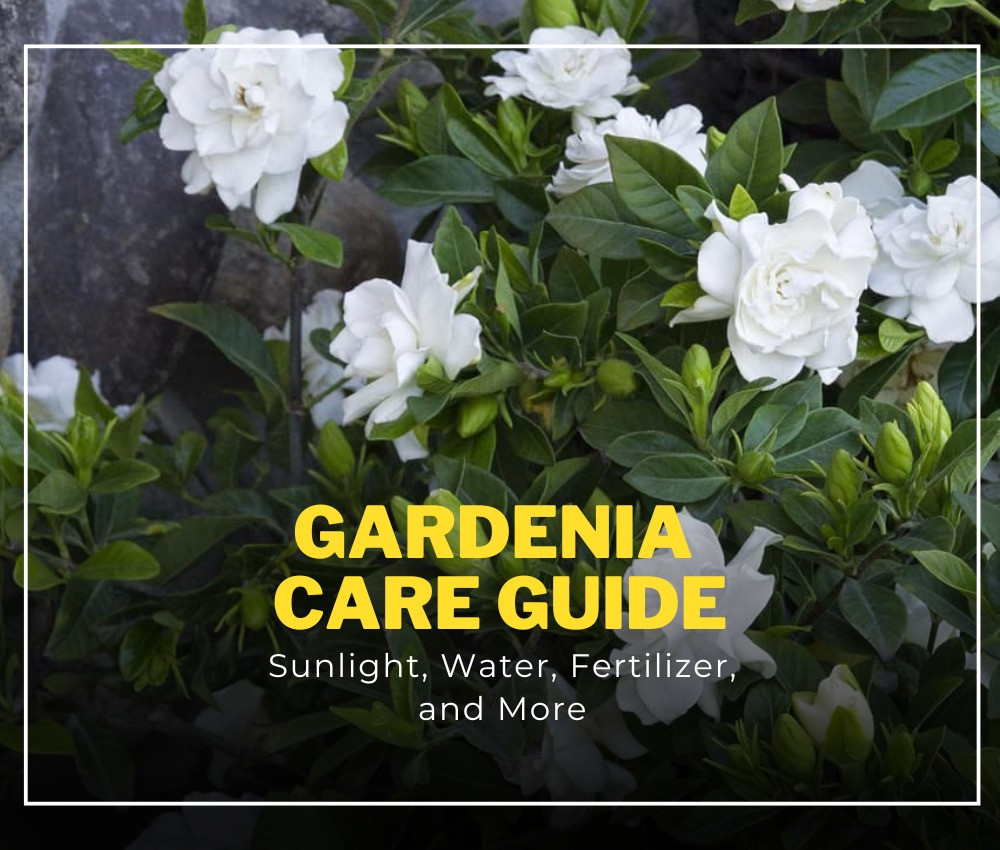Cape Jasmine Care Guide: Sunlight, Water, Fertilizer, and More
Discover the elegance of Cape Jasmine, renowned for its exquisite blooms and captivating fragrance. Thriving in warm climates, it's perfect for both seasoned gardeners and beginners. Ensure well-drained acidic soil, ample sunlight, and proper care to enjoy its beauty year-round.
Cape Jasmine, also known as Gardenia, is a delightful addition to any garden or indoor space, renowned for its elegant white blossoms and enchanting fragrance. With its remarkable adaptability and ease of care, it's a top choice for both seasoned gardeners and beginners alike. This resilient plant requires watering when the top 3 cm of soil has dried out, ensuring just the right amount of moisture for optimal growth. Fertilize once a month during the growing season to provide essential nutrients, and prune in winter to maintain its health and shape. Planting is best done in spring or autumn, while propagation through sowing seeds or taking cuttings offers exciting possibilities for expanding your garden. When potting, ensure excellent drainage to prevent waterlogging, and choose soil that is slightly acidic to neutral, such as clay, loam, or sand. With its high resistance to pests and diseases, Cape Jasmine is a hassle-free option for even the most inexperienced gardeners, thriving in USDA hardiness zones 8-11 and basking in full to partial sunlight.
Condition Requirement
Water and Hardiness :

Cape Jasmine, native to tropical and subtropical regions, thrives in warm temperatures and high humidity levels. With its hardiness suited to zones 8-11, gardeners in cooler climates often cultivate Cape Jasmine in containers, transitioning it outdoors during the summer and indoors as a houseplant in winter. To foster its growth successfully, maintain an average daytime temperature between 68-73°F and a night temperature of about 59-61°F. Exposure to freezing temperatures may hinder its ability to regrow in subsequent years.
Sunlight:
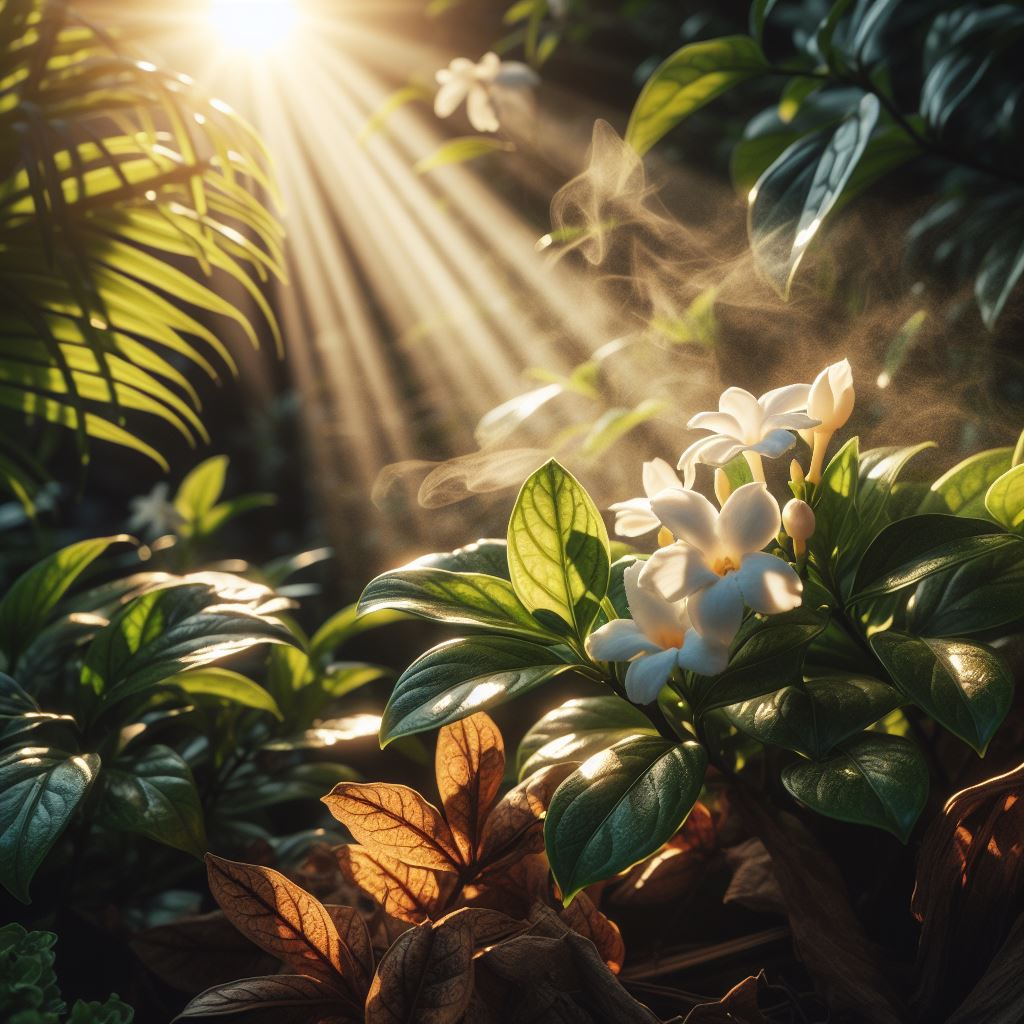
Sunlight is crucial for Cape Jasmine, belonging to the Gardenia genus, as it thrives in bright light, particularly in the mornings. However, direct sunlight must be filtered to prevent damage such as scorched and wilted leaves, along with sparse flowering and weak stems. In cooler regions, Cape Jasmine may tolerate full sun, but some shade is still beneficial. For indoor cultivation, ensure your Cape Jasmine receives a minimum of six hours of sunlight through a sunny window to support healthy growth and abundant flowering.
soil:
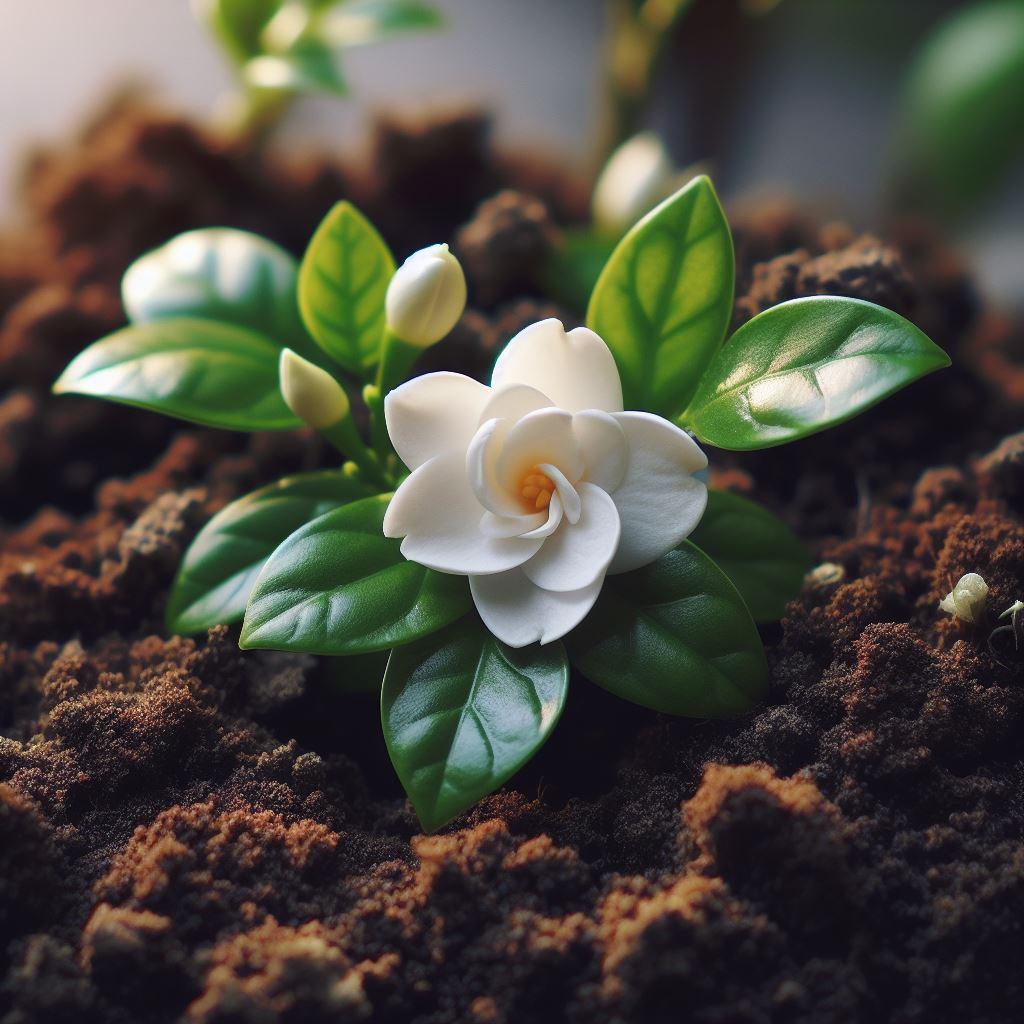
Cape Jasmine thrives in acidic soil with a pH range of 5 to 6.5, prioritizing well-drained, organic, and nutrient-rich conditions. Utilize soil test kits to assess soil acidity accurately, ensuring optimal growing conditions. Additionally, test your water source, as tap water typically tends to be slightly alkaline, which may affect soil pH levels. Maintaining the ideal acidic environment is key to fostering healthy growth and vibrant blooms in Cape Jasmine.To counteract alkaline soil, various amendments can be incorporated, including peat moss, elemental sulfur, and iron sulfate. Diluted vinegar is also effective in rapidly acidifying soil, alongside the addition of coffee grounds. Heavy soils like sand, clay, or silt benefit from organic matter amendments such as aged manure, ground bark, or finished compost before Cape Jasmine planting. Organic supplements like leaf mold and alfalfa meal enhance growth, while applying a 2-4 inch layer of organic mulch around the plant base each spring aids in moisture retention and soil health.
Also Read : Supercharge Your Garden: The Ultimate Guide to Soil Types and Impact on Plants
Care Guide
Planting:
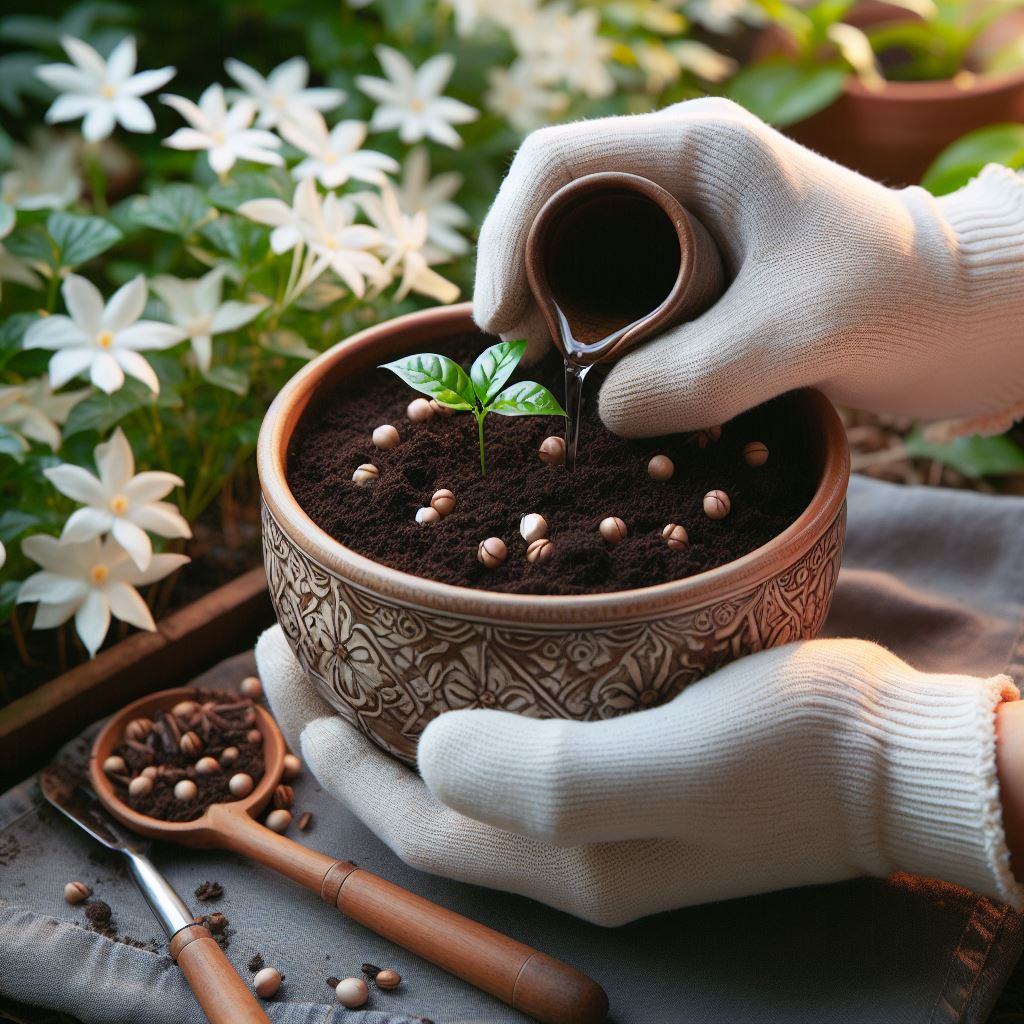
Cape Jasmine can be grown from seeds or cuttings, but many prefer purchasing established plants. Opt for a spot in your garden that receives bright, filtered light, ideally sheltered from winter winds. Avoid planting near concrete surfaces, as alkaline runoff can disrupt soil pH.
Watering:

Maintain consistently damp yet well-drained soil for Cape Jasmine, aiming for approximately 1 inch of water per week. Avoid over-watering to prevent stress and dropped flower buds, while ensuring roots are not flooded.
Fertilization:
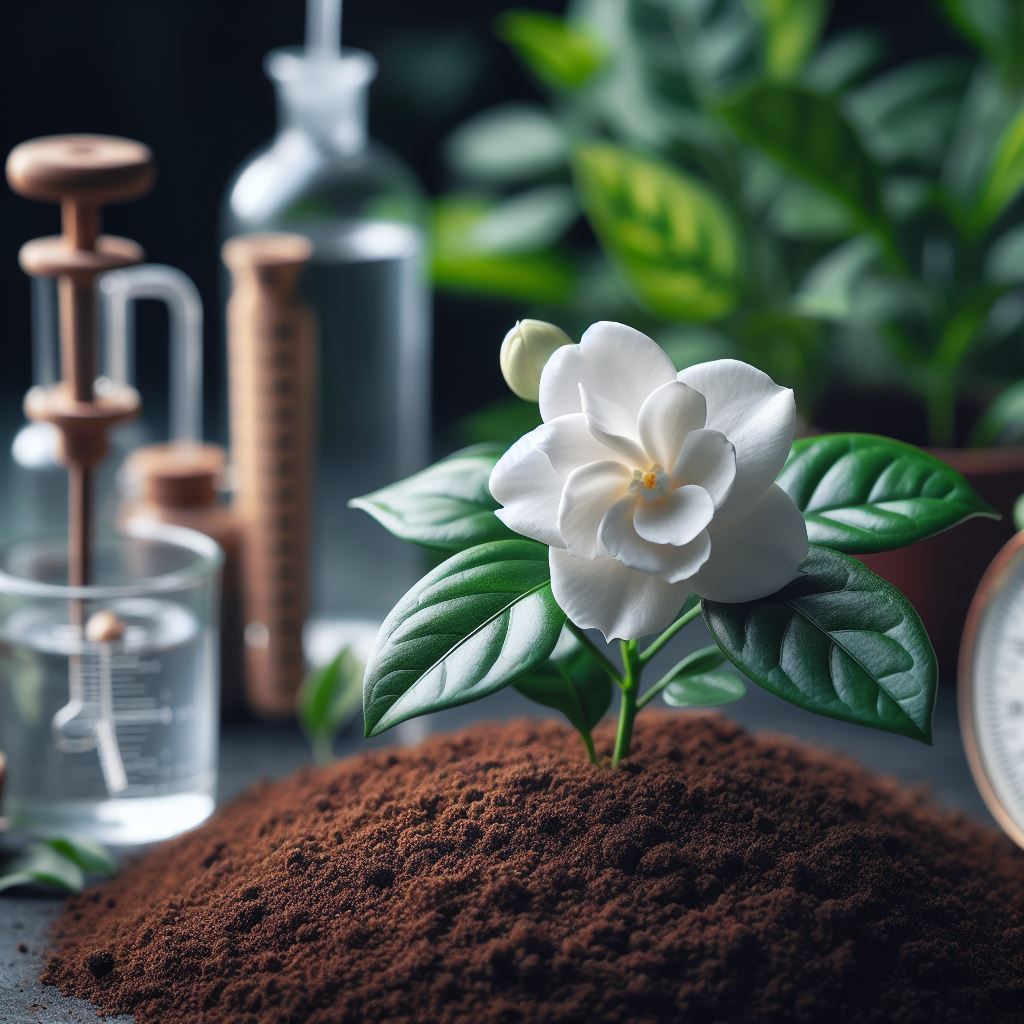
Fertilize Cape Jasmine monthly during spring and summer with acid-loving plant fertilizer to maintain soil pH. Use a balanced fertilizer with equal proportions of nitrogen (N), phosphorus (P2O5), and potassium (K2O), such as 3-1-2 or 3-1-3. Dilute concentrations to avoid plant burning.
Seasonal Precautions:

While some Gardenia species are cold-hardy, most are susceptible to damage from freezing temperatures. Protect Cape Jasmine during cold snaps with blankets or cardboard boxes. Gardeners in colder regions should bring Cape Jasmine indoors during winter to prevent damage.
Common Problems:
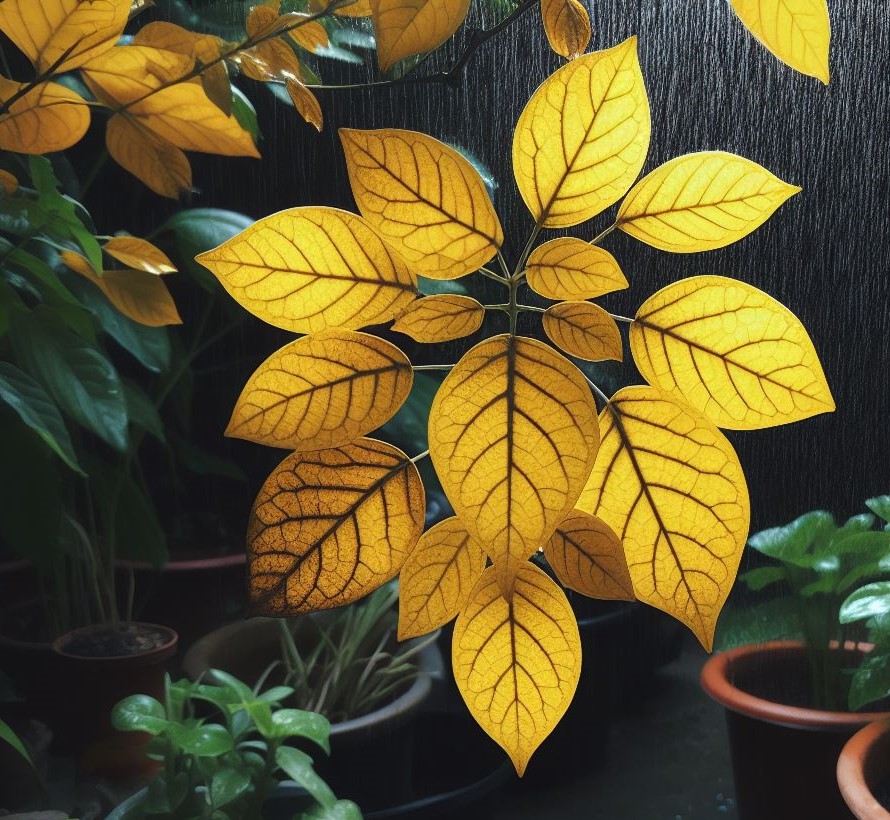
Yellow leaves may indicate cold temperatures, poor drainage, or nutrient deficiency. Remedies include relocating plants to warmer areas, improving drainage with sand or vermiculite, and supplementing with iron or magnesium.Brown leaves may result from poor drainage, low humidity, insufficient sunlight, or pests. Enhance drainage, increase indoor humidity and sunlight, and address pest infestations by adding shade plants around Cape Jasmine to trap moisture.
If your Cape Jasmine isn't flowering, several factors could be at play. If it hasn't produced any flower buds in spring, late-season pruning the previous year might be the culprit. To remedy this, prune immediately after flowers drop off, before new buds form. If buds are present but fail to open, insufficient heat could be the issue. Additionally, poor soil pH and drainage might hinder flowering, necessitating the use of a soil acidifier and drainage improvement measures. By addressing these factors, you can encourage your Cape Jasmine to bloom beautifully.
